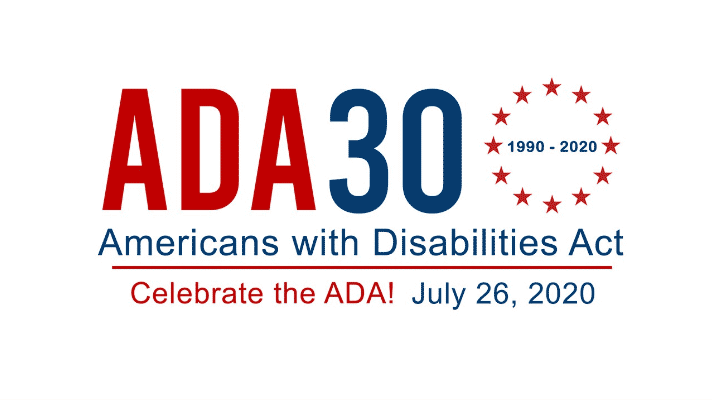On the 30th anniversary of the Americans with Disabilities Act, the number of website accessibility lawsuits in the U.S. is increasing. Here’s what you can do to create more inclusive online experiences for people with disabilities.

Sharon Rowe, founder and CEO of Eco-Bags Products, was not expecting a lawsuit when the package from a California law firm arrived via FedEx, but that’s what she got. In part, the letter read:
Re: Lawsuit for Violations of the Americans with Disabilities Act
We believe that your website’s inaccessibility subjects you to liability under both state and federal law … We believe that our client is now entitled to statutory damages and an injunction; we will shortly file suit.
“When we received the letter,” Rowe says, “we searched the web and saw that there were a ton of these lawsuits out, scamming people, so we initially ignored it. Since it seemed that the majority of these suits were legal attacks looking for settlements using loopholes, we didn’t want to play into that. We didn’t think we were at legal risk because there were so many articles calling these actions out.”

A Certified B Corporation since 2010, Eco-Bags Products has spent the last 31-plus years “cleaning up the planet one bag at a time.” Running a company that cares so deeply about people and the planet, Rowe says a discrimination lawsuit was furthest from her mind.
“We didn’t understand anything about ADA compliance and wound up spending a lot of time and energy on legal costs and the settlement,” she says. “The actual compliance issues were addressed immediately at a reasonable cost but that didn’t satisfy the plaintiff.”
Rowe also turned to Netsuite and Shopify, the software companies Eco-Bags Products used to run its website, but they were of little help. “We figured they would know about compliance since they host thousands of businesses, but they didn’t have any insights or tools.”

One Billion Strong
This month marks the 30th anniversary of the Americans with Disabilities Act (ADA), a bill signed into law on July 26, 1990, by President George H.W. Bush that protects people with disabilities from discrimination. While the ADA provides clear guidelines related to public transportation, buildings, employment, and even the programs and services of public entities, it doesn’t include specific regulations regarding how people with disabilities interact with websites or other digital products and services. (When the ADA was signed into law, it would be another year before the world’s first website launched.) This has caused problems on many levels:
- First, for up to 1 billion people around the world who identify as having some sort of cognitive or physical disability, the internet can be more frustrating than it is useful. In some cases, lack of access to critical information also can be life-threatening.
- Second, the lack of clarity around regulations leaves many business leaders confused about what is required of them (if they’re aware of website accessibility issues at all).
- Third, this environment has led to thousands of lawsuits filed against unwitting defendants, many of whom may not understand how they broke the law.
- Finally, with coronavirus, people are relying on digital products and services more than ever, significantly exacerbating the first issue above.
While these lawsuits have helped increase awareness and evolve the definition of accessibility to include digital properties, the lack of ADA-specific legal requirements leaves many cases open for interpretation, which in turn spawns more lawsuits. It’s a vicious cycle.

Rulemaking (or Not)
In 2010, the U.S. Department of Justice began a “rulemaking process” to draft formal regulations for websites to meet ADA requirements. However, in December of 2017 the department withdrew its process, leaving the future of website-specific ADA regulations hanging in the balance.
Since then, website-related ADA lawsuits have risen significantly. Between 2017 and 2018, the number of these lawsuits increased by 177%. According to the Los Angeles Times, “The Trump administration’s decision to stop drafting rules for website ADA compliance is widely seen as opening the floodgates to legal action.”
In turn, some law firms have exploited this situation. “In our case,” Rowe says, “the plaintiff wanted a huge financial settlement plus product amounting to twenty times a normal online order. This is when we knew the suit was more about settling for money than fixing a dispute.”
Practicing Inclusive Design
Every company has a website. Yet, when the folks at AccessiBe, an AI-powered web accessibility solutions provider, tested 10 million webpages for accessibility features, they found that an overwhelming majority of them failed to pass most tests. In other words, unless you’re already on top of these issues, there’s a good chance that your company website is inaccessible to users with disabilities, which puts you at risk for a lawsuit. Many business leaders are unaware of this.
“In a perfect world, these lawsuits would be unnecessary,” says Charles Petrof, a senior attorney at Chicago’s Access Living, a center of service, advocacy, and social change for people with disabilities. Instead, agencies and web developers would fold accessibility directly into all their projects. Companies and nonprofits would incorporate internal accessibility policies and train their teams on accessibility practices to ensure those policies are enforced over time. But we’re not there yet.
While there aren’t yet federal ADA regulations when it comes to digital accessibility, the World Wide Web Consortium has published the Web Content Accessibility Guidelines. Website owners, content creators, and web developers can use these guidelines to make their websites more accessible.
Also, in Eco-Bags Products’ case, the lawsuit was specific to people who are blind. ADA guidelines, however, cover a broad range of physical and cognitive disabilities. It is important to consider all forms of potential disability when making your website or digital product accessible.

‘Surf-By’ Lawsuits: What to Do?
Many of these lawsuits are referred to as “surf-by” suits, a nod to “drive-by” lawsuits where an attorney seeks a financial settlement and not a fix for whatever the issue is. In other words, the attorney uses the lawsuit as a threat rather than an effort to settle a dispute. Some lawyers go to jail for this shakedown approach. Interestingly, Title III of the ADA doesn’t actually provide for financial damages.
“Fix the accessibility problem first,” Petrof says. “Cut off any other responsibility at that point. Often, that will end the matter.”
What can you do if you get hit with a website-related ADA lawsuit?
“Don’t panic,” Rowe says. “You will probably need to retain a lawyer, preferably one with experience in this area. If you are served or the plaintiff pursues, you can decide to settle the suit or bring it to court. Unless you have very deep pockets to bring these cases to court, you run the risk of losing.”
Here are several steps to take if you get hit by an ADA-related website accessibility lawsuit:
- Contact a lawyer. You will need sound legal advice in this area. (The steps below should not be construed as legal advice.)
- Fix the issues. Work as quickly as possible to remediate the website issues in question. Rowe used AccessiBe’s monthly SaaS solution to quickly make the Eco-Bags Products website more accessible. You can also talk with your agency or an accessibility consultant. “Not everyone wants to know all the details of this stuff,” Petrof says. “Sometimes a consultant is a better option.”
- Negotiate a settlement. If the plaintiff decides to pursue even after you have fixed the issues, work toward a settlement. “In my case,” Rowe says, “I was consulted to settle so I worked with my lawyer to reduce the settlement.”
- Design a long-term plan. Create a forward-thinking governance plan (see below) to ensure this doesn’t happen again.

Designing Accessible Digital Products and Services
Lawsuit or not, it is important that companies take website accessibility seriously. It’s not just a matter of compliance, but also a chance to expand your company’s ecosystem to include an often unconsidered group as part of your stakeholders. Purpose-driven businesses like B Corps have an opportunity to lead in making more-accessible websites the norm rather than the exception.
“In general, people with disabilities tend to boycott organizations whose websites don’t meet their needs,” Petrof says. “This is a lost opportunity for most businesses. If one online retailer has an accessible website while another doesn’t, guess who the disability community is going to support?”
Click-Away Pound’s 2019 study backs up this claim, citing that 69% of users with disabilities who have difficulty using a website will move on to others that don’t have those issues. In the U.K. alone, they estimate this equates to £17.1 billion in lost revenue opportunities.
To make sure your website complies with accessibility guidelines, do these things:
- Set a baseline. Audit your website to understand where you are right now. WebAIM’s Wave tool will crawl individual URLs for free, while SiteImprove’s Accessibility Checker extension for Chrome will do the same for any page you have loaded into your browser. Use the audit to better understand quick fixes versus more resource-intensive technical considerations. You also might want to watch a webinar or download a checklist to better understand web accessibility basics.
- Website redesign. If you’re planning a website redesign, work with your agency or internal team to incorporate accessibility features as part of the redesign. It’s a lot easier to do this while a site is being built than to retrofit one after the fact.
- Website retrofit. If a retrofit is your only option, a tool like AccessiBe or other plug-and-play software might offer quick fixes while you devise a more comprehensive long-term plan.
- Engage stakeholders. Craft longer-term company policies and practices to help your team understand expectations and maintain website accessibility over time.
- Monitor compliance regularly. Schedule regular audits — perhaps quarterly or biannually — using some of the tools mentioned above to ensure your site maintains a high level of accessibility.
Design Problems Can be Fixed
“Lack of access is a design problem,” Petrof says. “We need more companies willing to make the commitment to accessibility in both their physical and virtual spaces, and we need more designers willing to build accessibility into their practices.”
These lawsuits have a funny way of making website accessibility issues top priority for unprepared companies, but why wait until that happens? By arming yourself with a bit of education, following the steps noted above, and charting a course for long-term change through better governance practices, purpose-driven businesses can serve as allies to the disability community rather than defendants.
B The Change gathers and shares the voices from within the movement of people using business as a force for good and the community of Certified B Corporations. The opinions expressed do not necessarily reflect those of the nonprofit B Lab.

Improve Your Company’s Inclusion Practices By Doing This was originally published in B The Change on Medium, where people are continuing the conversation by highlighting and responding to this story.